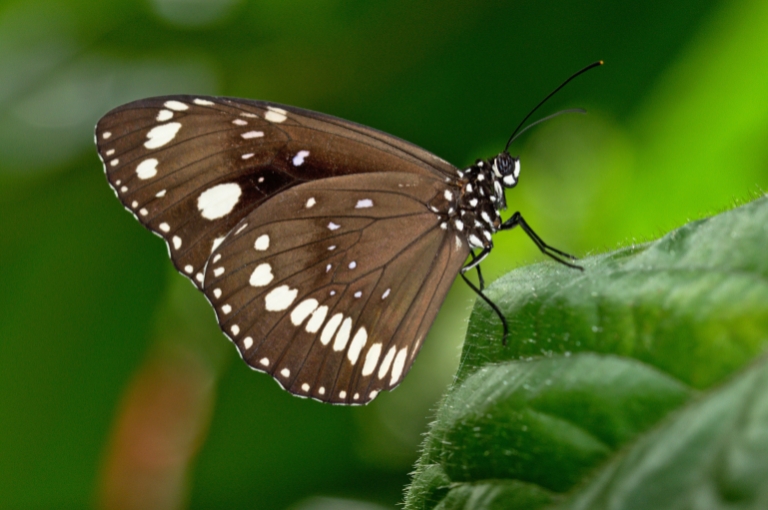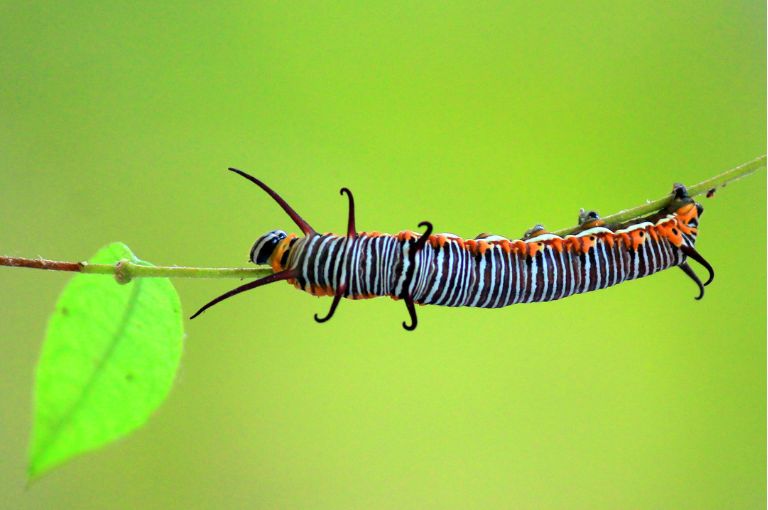
It may be called a common crow, but every winter this dapper butterfly forms an incredible display that is anything but.
Around June or July, adult butterflies congregate in their thousands in sheltered coastal valleys and offshore islands to overwinter together, creating a visual spectacle. Safer in these vast numbers, the butterflies go into a dormant state called a diapause, during which they shut down most of their basic life functions and live off their fat reserves and nearby nectar sources.
The common crow or oleander butterfly belongs to a family of butterflies known as Danainae which comprises around 300 species including the famous Monarch butterfly.
In Australia, the species is found in Queensland and northern NSW, although during humid summers migrates further south, alighting in the urban gardens of Sydney and occasionally reaching Victoria and South Australia. They also occur across northern Australia and as far west as Onslow in WA.
The butterfly can tolerate a large range of conditions and habitats, from coastal areas in the tropics through to high altitudes.
In Spring, they lay their eggs on the leaves of native and introduced milky sap-producing plants, such as oleander, milkweeds and Port Jackson figs. The caterpillars, coloured bright orange, black and white, are bedecked with four pairs of dramatic soft spines.

As they feed, they absorb the poisonous compounds in the sap which they retain in their tissues through to adulthood. This not only makes them unpalatable but in the case of many birds, highly toxic – eating just a single caterpillar can make a bird vomit. Due to this effective defense, several other species of edible butterfly have evolved to mimic the appearance of common crows.
After 21 days, the caterpillars form a resplendent metallic pupa that can be found hanging like a small jewel on the underside of leaves. Adult butterflies live for just 10-13 weeks.
When attacked they fake death and ooze a liquid, causing many predators to become nauseous and release them. Often, one brush with a common crow butterfly is enough to deter a would-be predator for life. A few species of birds, however, along with insects such as spiders, dragonflies and wasps, are unaffected by the poisons.
Although not on the threatened species list, oleander butterflies, like all native species, are at risk from habitat loss, fragmentation and the impacts of climate change. Our role is to help ensure that these highfliers and other common species remain so.




 Blog
Blog